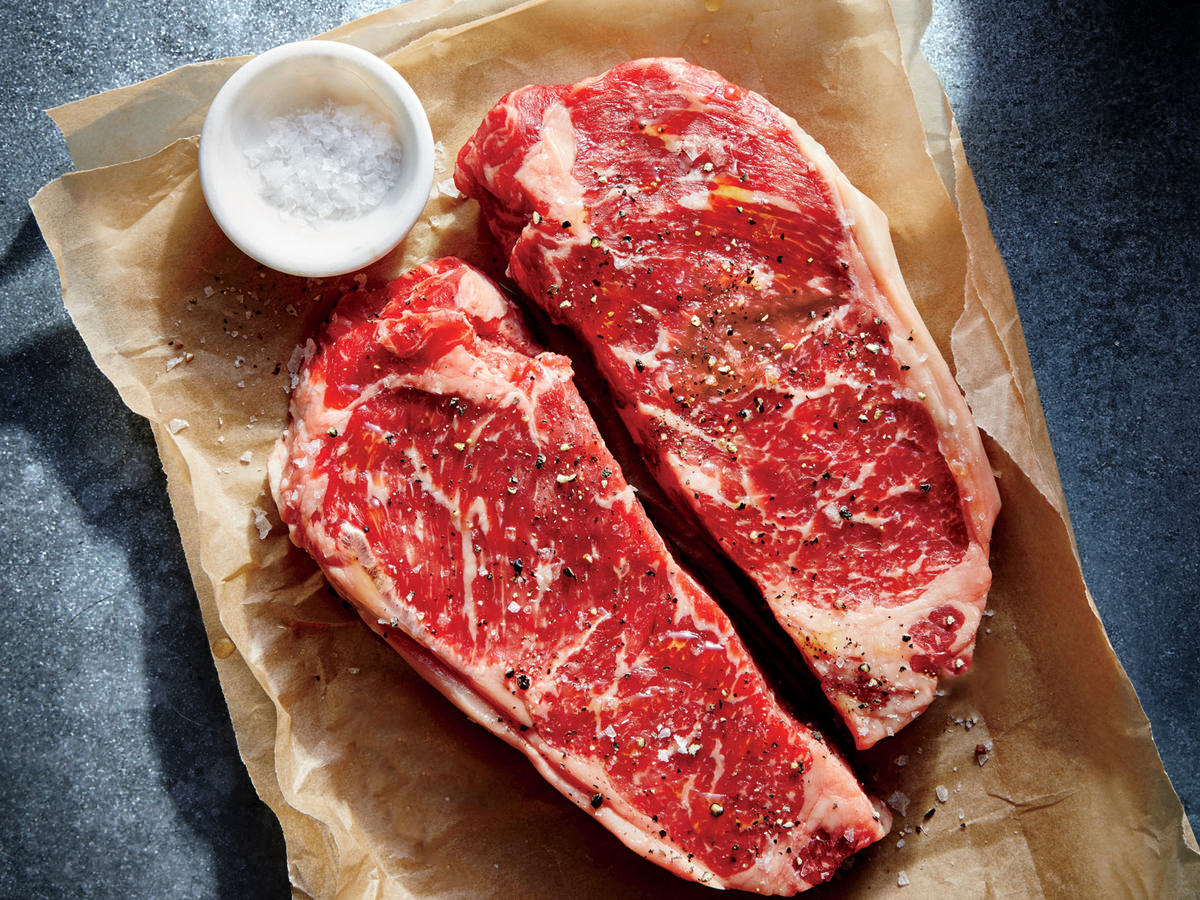The Benefits of Grass-Fed Beef, Part 1: Your Health

“You are what you eat.” Certainly you’ve heard this phrase before. For years, dieticians, physicians, and nutritionists have used this saying to drive home a message of eating healthy to be in good health … rather than eating fatty, overly processed, nutrition-devoid items resulting in poor health. Unsurprisingly, this analogy also applies when discussing grass-fed beef.
So let’s dive into the health benefits of grass-fed beef a little more. Let’s learn about why grass-fed beef will make an excellent part of your regular grocery run.
According to Francisco Lopez-Jimenez, M.D. at the Mayo Clinic, the heart health benefits of grass-fed beef are not to be ignored. According to Dr. Lopez-Jimenez, grass-fed beef tends to have:
- Less total fat
- More omega-3 fatty acids
- Added conjugated linoleic acid
- Increased antioxidant vitamins
Less total fat: The diets cows are fed has a big impact on the finished beef product. Much like humans, when we eat a healthy diet of lean proteins, produce, ample fiber, and low complex carbohydrates, our body mass index (BMI) and body fat percentage tends to be less than someone who lives off nothing but greasy fast food and loads of sugar.
While cows certainly aren’t the same as humans, the same analogy can apply. Eat healthy, live healthy, be healthy. Eat fat, live lazy, be unhealthy. According to healthline.com, grass-fed beef cattle forage for their food, a diet that consists of wild grasses and edible plants on the large ranch plots they’re raised on, walking and exploring all day, tending to take a longer amount of time to grow to a satisfactory size. Traditional beef cattle can be fed a multitude of different foods in an effort to grow their size quickly, all while standing in the feedlot for days on end. Some are even injected with hormones and antibiotics in an attempt to speed up their growth.
In the end, cattle who’ve been allowed to graze at their leisure while feeding off only natural vegetation on a natural timeline will have less monounsaturated fat (the bad-for-you kind) than traditional cattle. Meaning that gram for gram, grass fed beef has fewer calories than its counterpart.
More omega-3 fatty acids: One of the areas where grass-fed beef excels is the omega-3 fatty acid arena. Omega-3 fatty acids are polyunsaturated fats (the good-for-you kind!). The Harvard School of Public Health describes omega-3 fatty acids as being an integral part of cell membranes throughout the body and affect the function of the cell receptors in these membranes. They provide the starting point for making hormones that regulate blood clotting, contraction and relaxation of artery walls, and inflammation. They also bind to receptors in cells that regulate genetic function. Likely due to these effects, omega-3 fatty acids have been shown to help prevent heart disease and stroke, may help control lupus, eczema, and rheumatoid arthritis, and may play protective roles in cancer and other conditions.
The strongest evidence for a beneficial effect of omega-3 fats has to do with heart disease. These fats appear to help the heart beat at a steady clip and not veer into a dangerous or potentially fatal erratic rhythm.
Unfortunately, the human body cannot make omega-3 fatty acids on its own so it must obtain them through consumption. Healthline states that grass-fed beef tout a five-times-higher level of omega-3 fatty acids over traditional beef making the benefit to one’s heart health difficult to ignore.
Added conjugated linoleic acid: Healthline also tells us that the increase in conjugated linoleic acid (CLA) is up to twice what is found in traditional beef.
Commonly found in dairy and beef products, WebMD.com states that CLA has been determined to help reduce body fat deposits and improve immune function. It’s not unusual for fitness enthusiasts to take CLA supplements while working on sculpting their bodies. Similarly, an increase in CLA intake is believed to reduce hunger, allergy symptoms, and pain for those suffering with Rheumatoid Arthritis, while increasing strength.
Increased antioxidant vitamins: Antioxidants were all the rage not long ago … a real buzzword in the nutrition community. Antioxidants are substances that may protect your cells against the effects of free radicals – molecules produced when your body breaks down food or is exposed to tobacco smoke and radiation. Free radicals may play a role in heart disease, cancer, and other diseases. Antioxidants act as little shields to stop those free radicals from affecting our bodies.
Many people take supplements or vitamins to increase their antioxidant intake because of the added health benefits. For the consumer who is used to enjoying beef regularly, making the switch from traditional beef to grass-fed beef will increase your antioxidant intake in lieu of supplements or vitamins.
As more and more grocery shoppers are looking for healthier, minimally-processed options every day, grass-fed beef is beginning to bubble more toward the top of familes’ meal plans. According to Nielsen reports, sales of grass-fed beef are skyrocketing, increasing by hundreds of millions of dollars over the last ten-years alone. That statistic alone speaks to the demand for grass-fed beef. People are looking for healthier options, period.